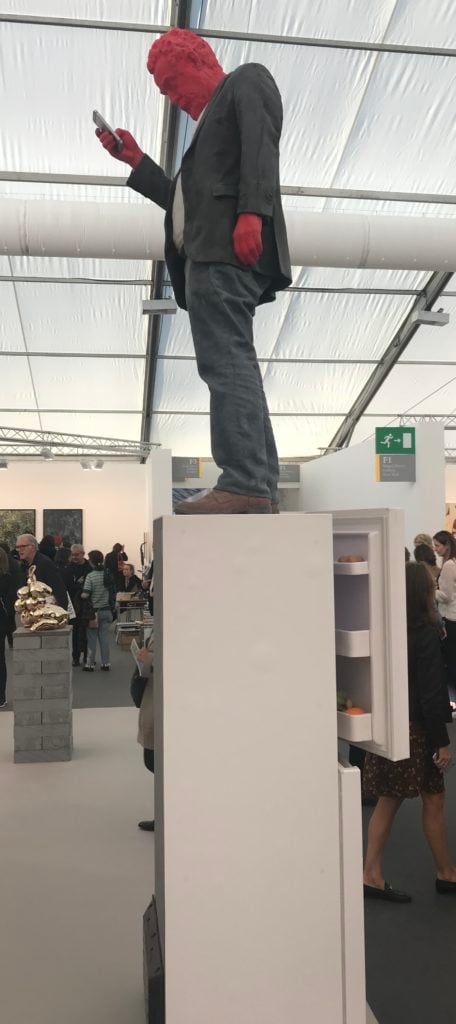Art Fairs
10 of the Best Artworks at Frieze London 2018
Here are some of the highlights of this year's Frieze London art fair, from new Urs Fischer paintings to a special appearance by Donald Trump.
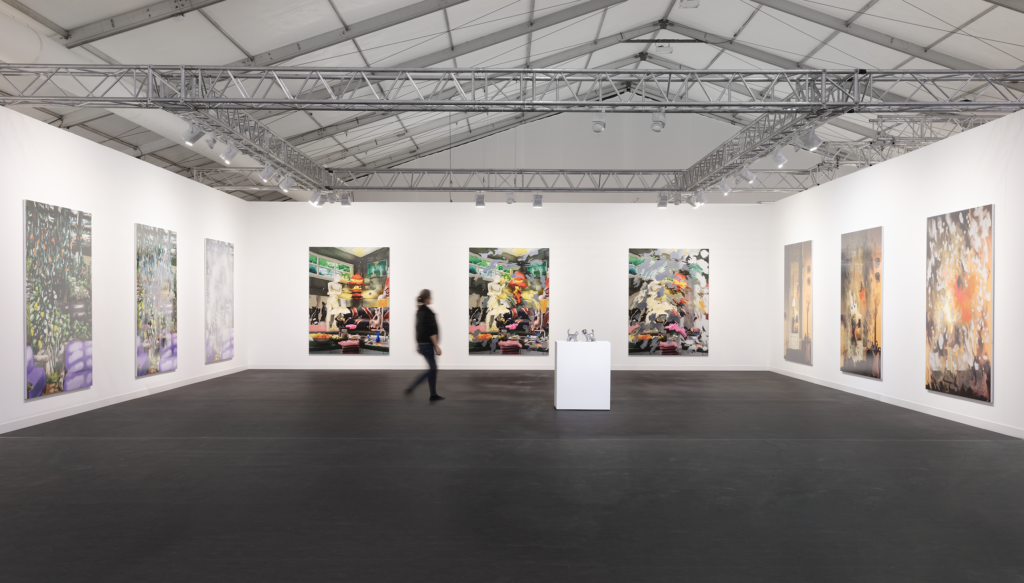
Here are some of the highlights of this year's Frieze London art fair, from new Urs Fischer paintings to a special appearance by Donald Trump.

Andrew Goldstein

A crowd-pleaser if not a crowd-challenger, Frieze London this year is an enjoyable romp through the cream of the market, where the ambition is often most evident in the show-stopping booth arrangements rather than any revelatory new messages beamed in from Planet Art. The oldies are goodies, though, and sometimes even greaties—so there’s plenty to feast your eyes on. Here are some of the standouts of the fair.
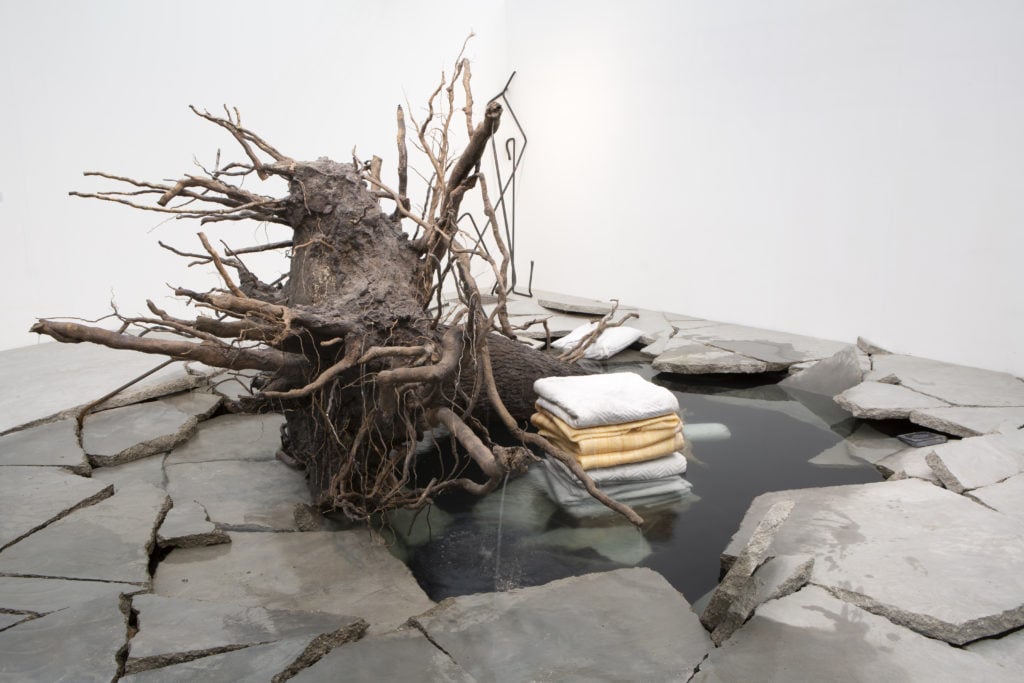
Entering the fair, one is immediately confronted by the spectacle of a giant uprooted tree crashed through a patch of pavement. Kerplunk! It’s the literally groundbreaking work of Tatiana Trouvé, an artist of typically more delicate sensibilities who has risen to fame for her elegant settings of attenuated sculpture and furniture conjoined as dreamy interior décor. Here, the installation—the artist’s largest to date—is a feat of fabrication, with a patinated bronze tree emitting streams of water from its roots to create a pool of water within the cracked concrete floor, in which marble sculptures (a book, a cast of moving blankets from Trouvé’s studio) are strewn. Originally conceived for a biennial, where it was eventually deemed impractical to install, it’s a hugely ambitious entry for an art fair, and it’s part of three new commissions the gallery has produced for the artist since she joined earlier this year. Nota bene: lucky buyers who take it home have the option of installing it either indoors or outdoors.
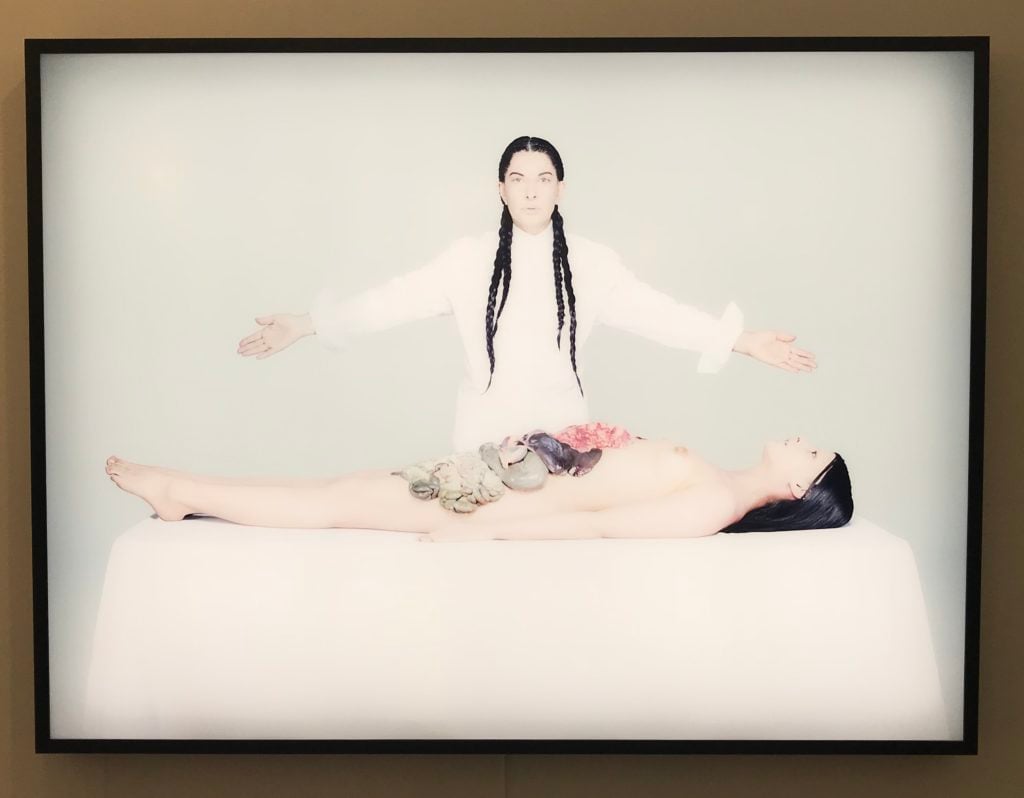
“This is Marina Abramovic. She is the most famous performance artist in the world.” Such was the shorthand used by a Frieze guide to introduce this piece to a tour group, and it was a bracing reminder of the power such superlatives have—particularly in an era of cultural overabundance, where everyone wants to edit down to the “best” and “most”—to focus the attention of a wide audience. It’s also a kind of reminder that, no matter how much the elite culturati might resent it (vis à vis Abramovic, for example), there’s no such thing as overexposure these days. And what the 71-year-old Serbian-born artist is doing with her prominence is actually very interesting.
For one thing, she is stepping out of the art bubble to create that rarest of things: effective political statements, like she did in solidarity with Pussy Riot, one of whose members may now have been poisoned in Russia. She’s also being bold in her art, becoming more and more overt about the evolving element that electrified her historic 2010 MoMA show (where she locked eyes and emoted with thousands of questing pilgrims), and inspired her to welcome people like Lady Gaga to an Upstate New York holistic wellness clinic of her own devising. What it boils down to is shamanism—the posture that she, as an artist, can offer people a portal into a realm of secular spirituality, with art as a tool for becoming more attuned to the miracle of existence.
As is typical with “overexposed” people, she’s not beating around the bush here. Her latest body of work, a series of lightbox photographs, show her standing in a white robe—where witchy long black hair braided over her shoulders—over the prone body of a (living) naked woman whose organs seem to be displayed atop her body, the outer and inner simultaneously present. It’s a miracle! Abramovic, who has spent time with more traditional kinds of shamans in Brazil, currently has a retrospective of her work, replete with her now-trademark “re-performers,” traveling through Palazzo Strozzi in Florence, seat of the Renaissance. If someday there’s actually a modern-day renaissance of spirituality in art, however woozy, she would be one of its patron saints.
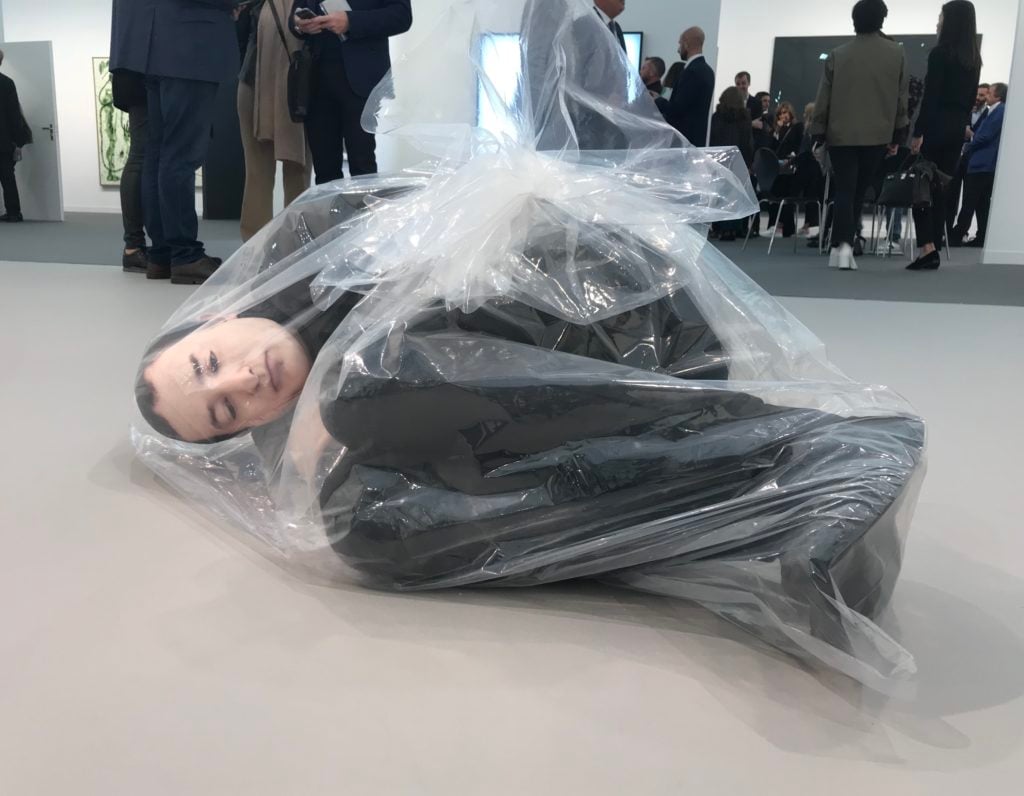
Being a journalist at an art fair is discouraging enough, wending from booth to booth to bother busy dealers, who are disappointed when they learn you’re not a collector and then aghast when you inquire about pricing. Then to come across a work like this, by Josh Kline, is almost too much to bear. Titled Dave/Journalist and featuring a youngish man with thinning hair curled up in a fetal position and bundled in a plastic bag like so much garbage, it comes from the artist’s 2016 “Unemployment” series, which predicts a future where the proliferation of sentient robots has rendered most basic human jobs (e.g., journalist) obsolete.
Kline sets his series in 2030, but there’s no need for digital-ink-stained wretches to wait that long—Thomson Reuters switched over to automated journalism for some financial stories all the way back in 2006, and the Associated Press, Forbes.com, and the Los Angeles Times have been working with companies like Narrative Science to robotically generate stories on data-driven subjects (like baseball stats, finance, earthquakes, and murder-rate fluctuations) for years now. (Kristian Hammond, the co-founder of Narrative Science, has predicted that 90 percent of news stories will be automated within a decade, and that “a machine will win a Pulitzer one day.”)
It’s quite possible that Frieze Doha 2028 will be reported by mosquito-like drones overseen by a semi-human editor ensconced in an undersea eco-bunker somewhere—or more likely still that it will all transpire inside an airless art-storage facility, guided by highly paid trading algorithms betting on the near-term returns for vast amounts of virtual artworks produced by an augmented “Josh Kline”–style AI. Come to think of it, maybe it’s not so bad to be a journalist at an art fair these days after all.
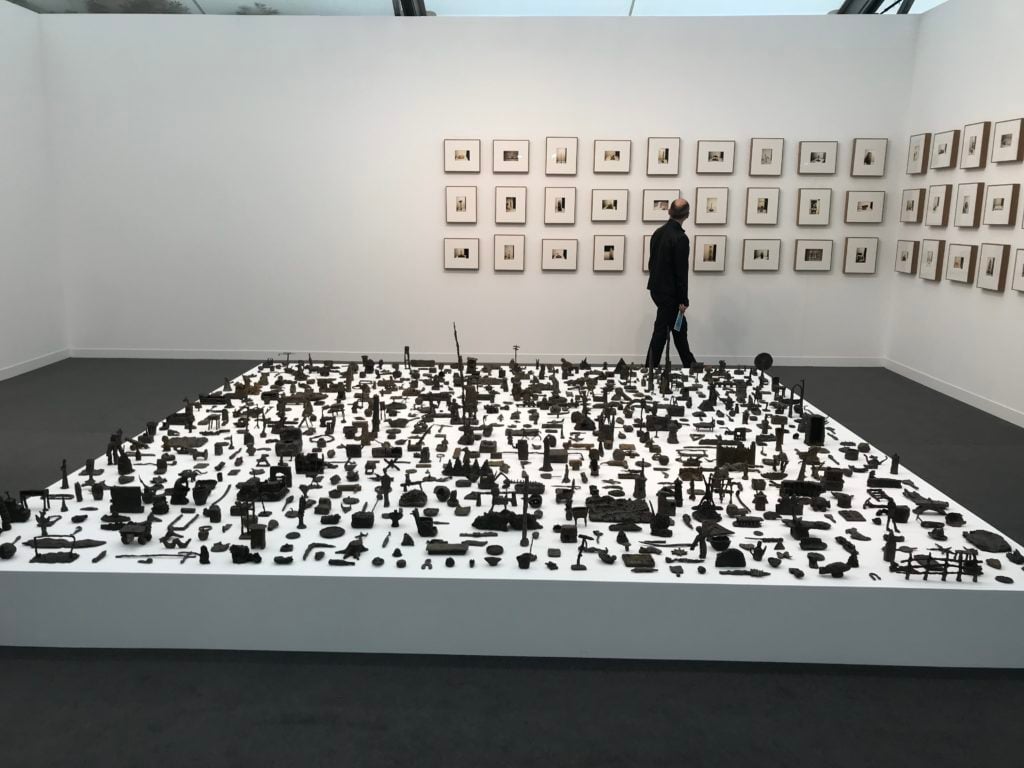
It must be an incredible experience to be a 40-something artist, or anyone, who was born in China—the epochal changes that country has experienced since Mao’s death in 1976 are staggering beyond belief, from Communist dictatorship to democratic dawn to fierce crackdown to capitalist surge to the current rule of a non-ideological state predicated on pure power. Born in Beijing in 1974, the artist Ouyang Chun witnessed all of this, first from within the Chinese capital and then, in his formative years of art school, from a suburb of the central Chinese province of Xi’an. Unlike the artists of the generation preceding him, who created plangent political work, Ouyang addressed the massive changes in his country by looking at the minute detritus of the modernizing nation, for instance walking along the railroad tracks that led from his town to the closest city and building miniature sculptures from the garbage he found.
These ephemeral constructions from 1999, which recall Cy Twombly’s studio casts (or the sculptural noodlings of B. Wurtz), mostly survive today in the form of photographs, which ShanghART is offering at the fair as a package deal with a more recent series of miniature bronzes from 2013. Ouyang is most famous in China as an Art Brut-esque painter, typically depicting minuscule figures set against vast urban backdrops (or in other states of anxiety), but these bronze sculptures are meditations on the artist’s internal landscape: tender little depictions of the places his visited, things he’s owned, artworks he’s seen. When life gets too big, he seems to say, you can find comfort in the small.
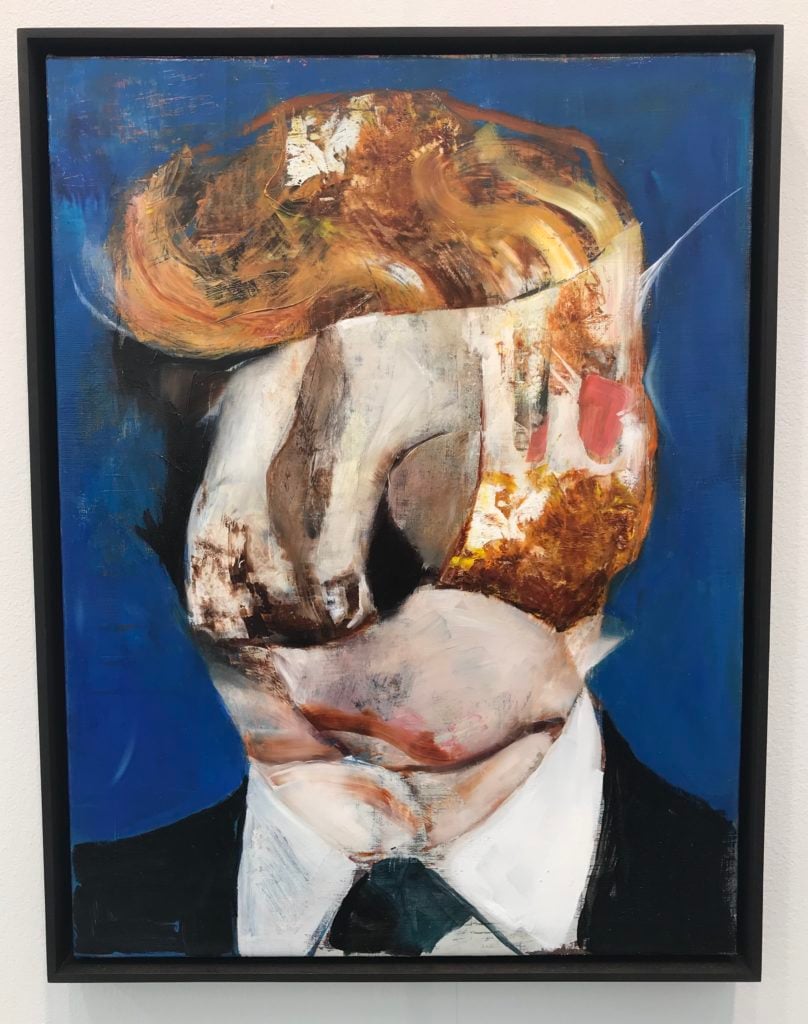
It’s a bit frightening to round a corner and suddenly get an eyeful of the inflated red pompadour of President Donald Trump. It’s more unnerving still when that haircut is attached to a monstrous, swirling, Bacon-esque face, and you realize that it’s the latest installment in Adrian Ghenie’s series of portraits of modern history’s greatest monsters. (Hitler, Mengele, Stalin, etc.) Let’s hope that time doesn’t prove that prediction accurate. Sold to a British institution, the blazing art star’s doomy painting is leavened somewhat by the fact that, a few booths over, at Pace, another portrait of an obscured, sliver-haired face, rendered in similar dimensions, seems a bit more upbeat.
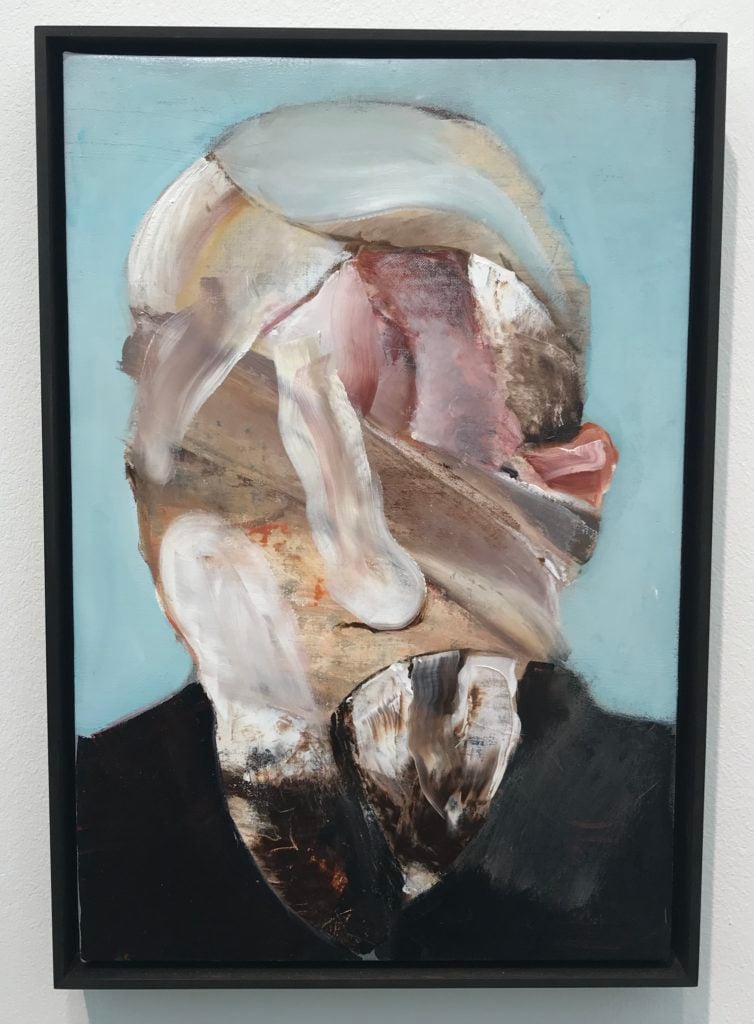
Untitled (2018) at Pace’s booth.
Is it Pence, taking over after some unimaginable cataclysm and thrusting the US further into an iron-clad patriarchal theocracy? A Pace representative said she couldn’t reveal the identity, because it was a portrait of someone at the fair, who bought the painting.
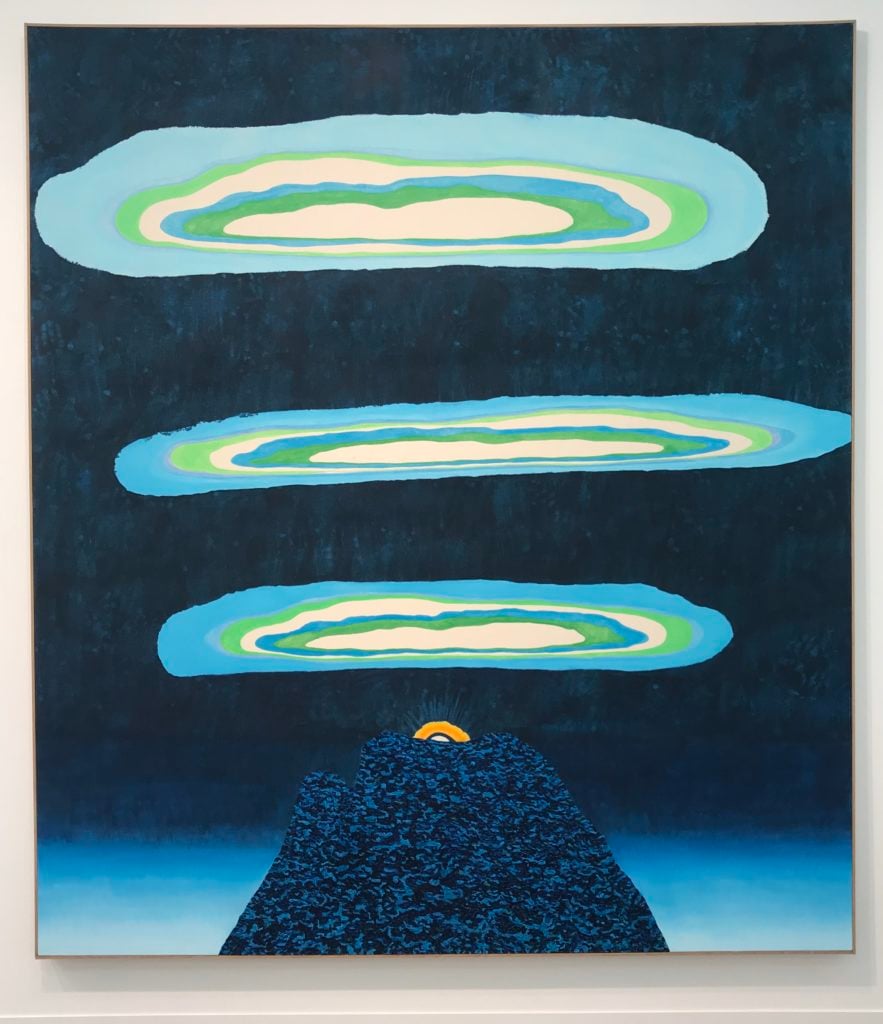
Speaking of big galleries, it’s nice when they can find a way to work with smaller dealers in representing young artists rather than plucking them outright, and that seems to be the case with William Monk, who Pace has been officially representing in conjunction with Amsterdam’s GRIMM gallery as of last weekend. A Brooklyn-based British artist just past 40, Monk paints landscapes of an psychedelic, Peter Doig-inflected cast, often with smoke or bursts of light hovering in the sky in a way that could be either lovely or catastrophic. The mood, overall, is meditative, vaguely transcendental, and even a bit trippy in a way that vibes with the painting of another relatively new Pace cadet, Loie Hollowell. It’s a big change in the gallery’s historic program from the rule-based abstraction that founder Arne Glimcher championed from its founding decades back, and a sign of its frontier-scoping vision under Marc Glimcher, transitioning the venerable gallery to address a new generation.
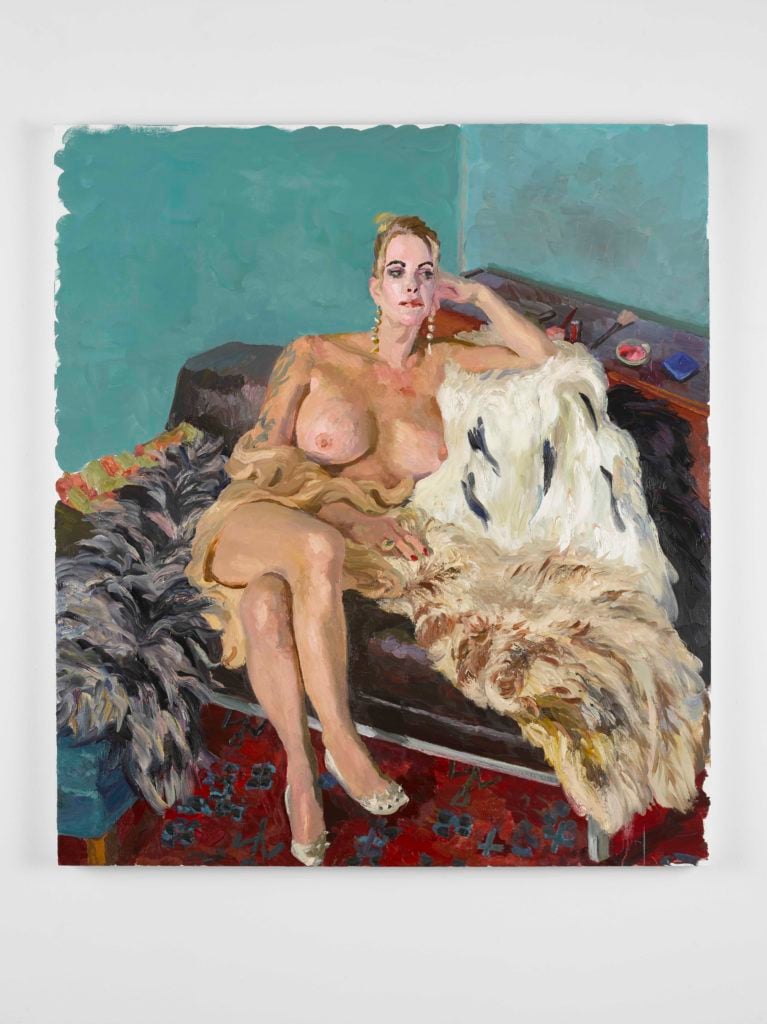
With the biggest galleries getting bigger and bigger as the art world keeps expanding, it makes you wonder if someday we’ll get some art of equally enlarged ambition, just as the Hollywood studio system gave us Gone With the Wind. If that happens, Liu Xiaodong might be in the running to pull it off—a former movie star himself, the painter works in cinematic scope, going on location for months at a time to create massive history painting-style canvases that chart the epic lives of the marginalized. This portrait saw the artist travel outside of Asia, where has painted small-town Chinese villagers and transsexual Bangkok prostitutes alike, to Germany, where he painted the Berlin-based transgender actress Sasha Maria von Halbach in the run-up to his current career retrospective that straddles both the Kunsthalle Düsseldorf and NRW Forum Düsseldorf. (His paintings can be so enormous, one museum couldn’t contain them all.) A deft painter of rapid, draughtsmanlike brushstrokes, Liu accompanies his work with documentary material stretching from sketches to journals and photography, and he captured the creation of this portrait in video as well (you can watch it here). This is painting on the big screen, in every sense.
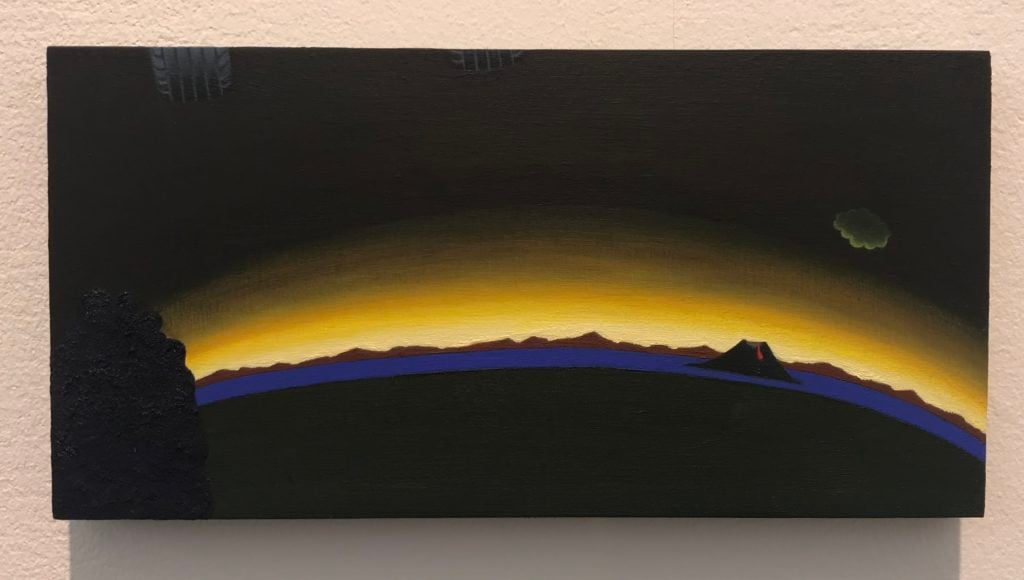
How does the 29-year-old artist Alexandra Noel make painting, that warhorse medium of the pre-technological era, feel fresh? By shrinking it down to the scale of the devices we use to consume the vast majority of content these days: smartphones, tablets, Switches, and the rest. Each of her paintings on offer in the young-galleries section is of a handheld scale that you could comfortably cuddle up with and gaze upon from an intimate distance, and this effect is then enhanced by the fact that she frequently uses her small canvases to depict sweeping landscape and other enveloping scenes—or, conversely, to use her largest formats (about the size of glorified phablet) to depict the small, like a closeup of a baby’s mouth.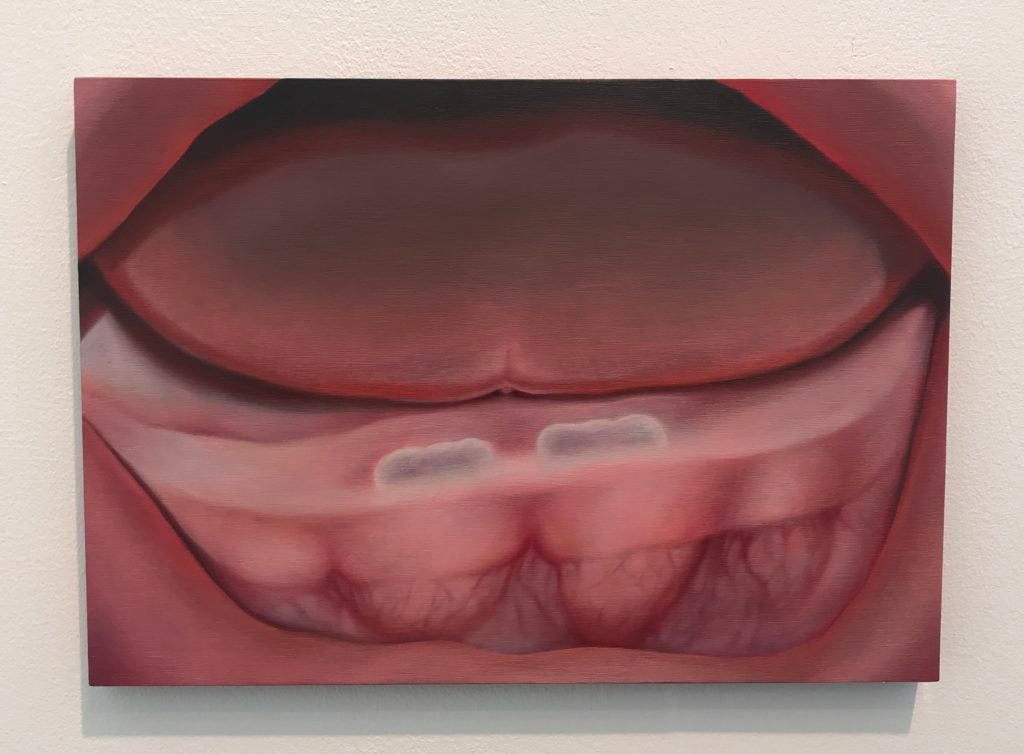
Perhaps because of her easily shippable scale, dealers love to show her work: over the past two years alone her paintings have been displayed at such far-flung (and chic) venues as Travesia Cuatro in both Madrid and Guadalajara; Freedman Fitzpatrick, Parker, and Night Gallery in Los Angeles; Galleria Acappella in Naples; Jessica Silverman Gallery in San Francisco; Shane Campbell Gallery and Andrew Rafacz Gallery in Chicago; Balice Hertling and Galerie Sultana in Paris; and XYZ Collective in Tokyo. That’s insane.
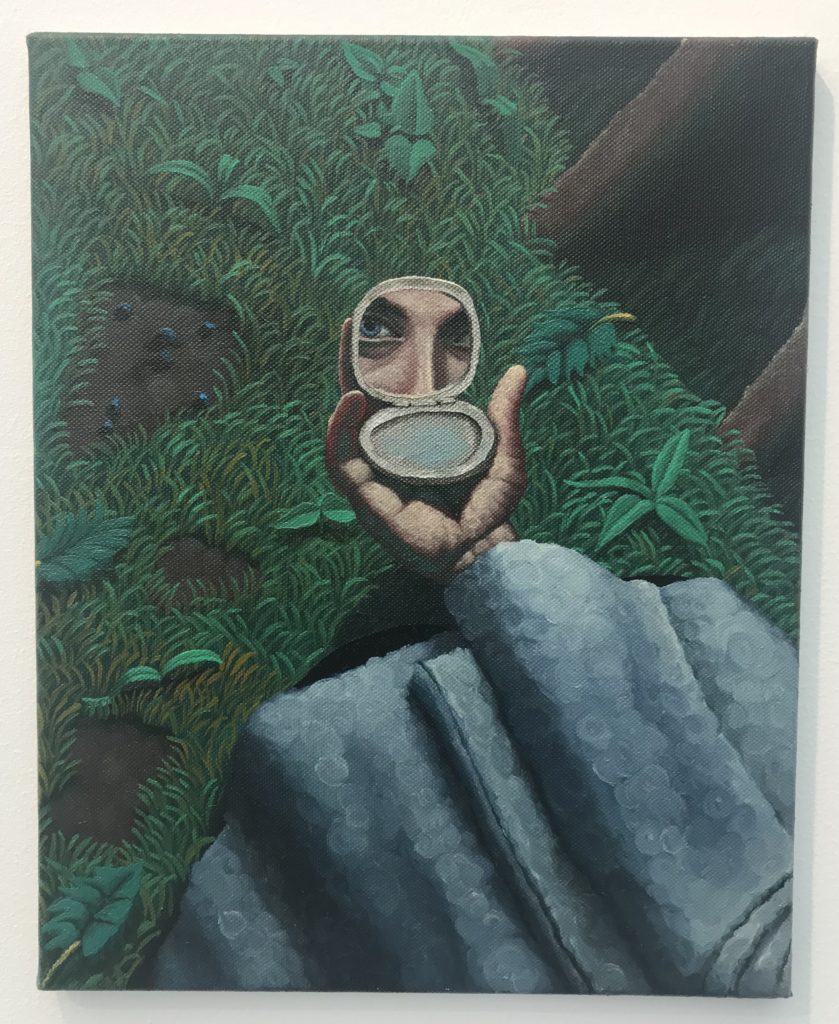
Ok, how does the even younger 24-year-old artist Bendt Eyckermans make painting interesting? By working magic with the paint itself, endowing it with a strange, hallucinatory glow. The trick, his dealer explained, is that the Belgian artist approaches the oil he lays down on linen in a sculptural fashion—a natural approach, perhaps, for the son and grandson of two generations of sculptors, who paints in his grandfather’s former studio, surrounded by his sculptures.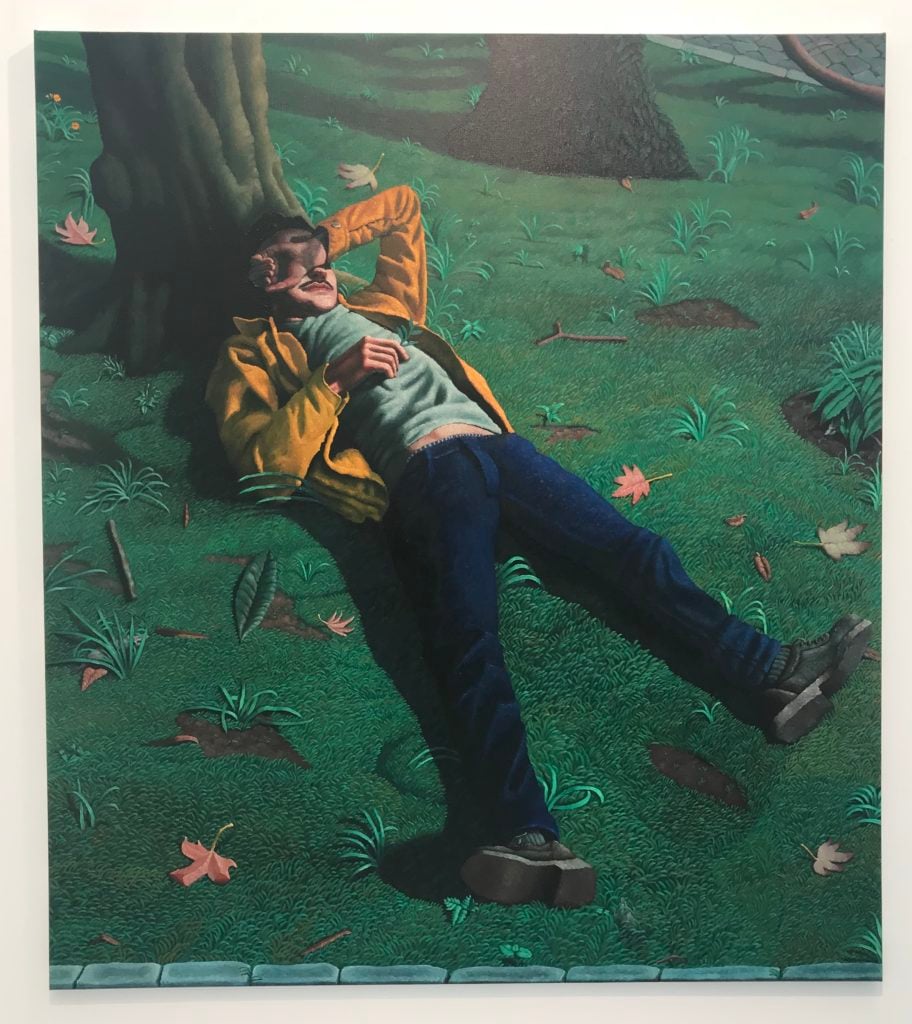
To create his modest but evocative scenes, which Eyckermans conjures from memory as a way of thinking through how one’s mind alters events in the retelling, he swirls his paint around in little Van Gogh-esque (or perhaps Pointillist) curlicues, building up the brighter colors to catch the light so that the canvas seems iridescent. His solo booth at Frieze marks his debut in an international context, but Eyckermans is already being hailed as a rock star in the Antwerp art scene
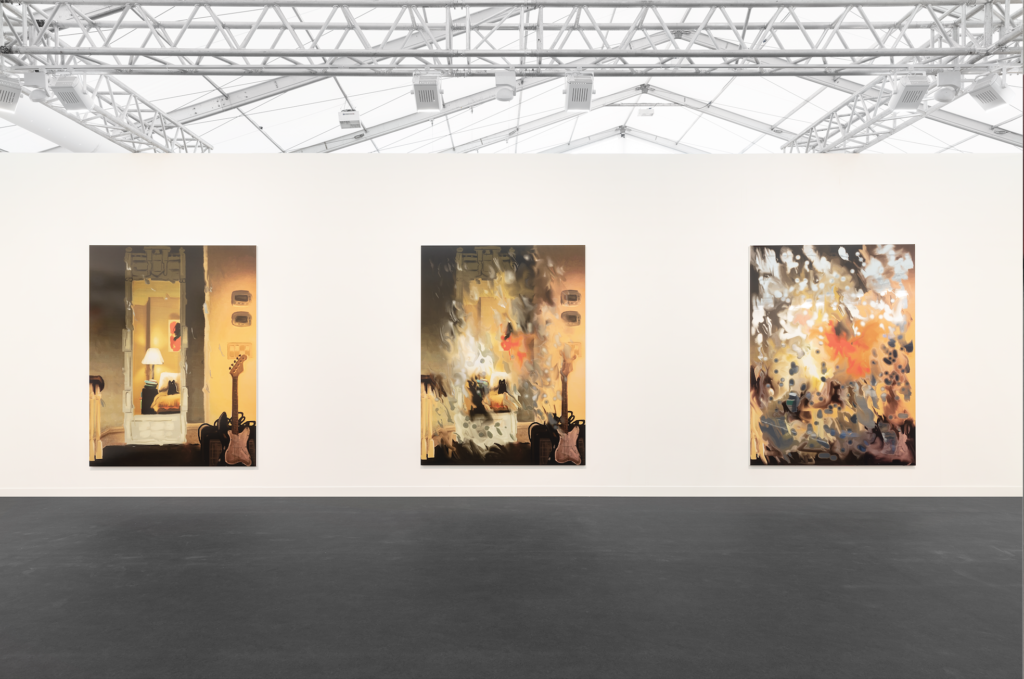
Photo: Lucy Dawkins, courtesy of Gagosian.
With his bravura life-size candle portraits (and slightly different interactive clay portraits) having become so ubiquitous on the international art circuit lately, some people have been wondering if the endlessly imaginative artist Urs Fischer had finally run out of creative juice. (One anonymous artnet columnist—ok, Kenny Schachter—was recently photographed mooning the artist’s candle portrait of Dasha Zhukova at Gagosian’s Davies Street gallery, so tired he was of the gesture.)
Well, buckle up, because Fischer is now presenting his new series of paintings in what accounts for one of the most over “moments” at this year’s fair. The big splash takes place at Gagosian’s booth, which has been given over to three triptychs depicting the artist’s light-filled home over the span of a day, which the artist “made by hand using a digital substrate,” according to the gallery (i.e., on an iPad), altered, and then printed onto unprimed aluminum, allowing the metal to shine through. (Another example on primed aluminum, also shipped directly to the fair from the artist’s studio, can be found at the Modern Institute’s booth.)
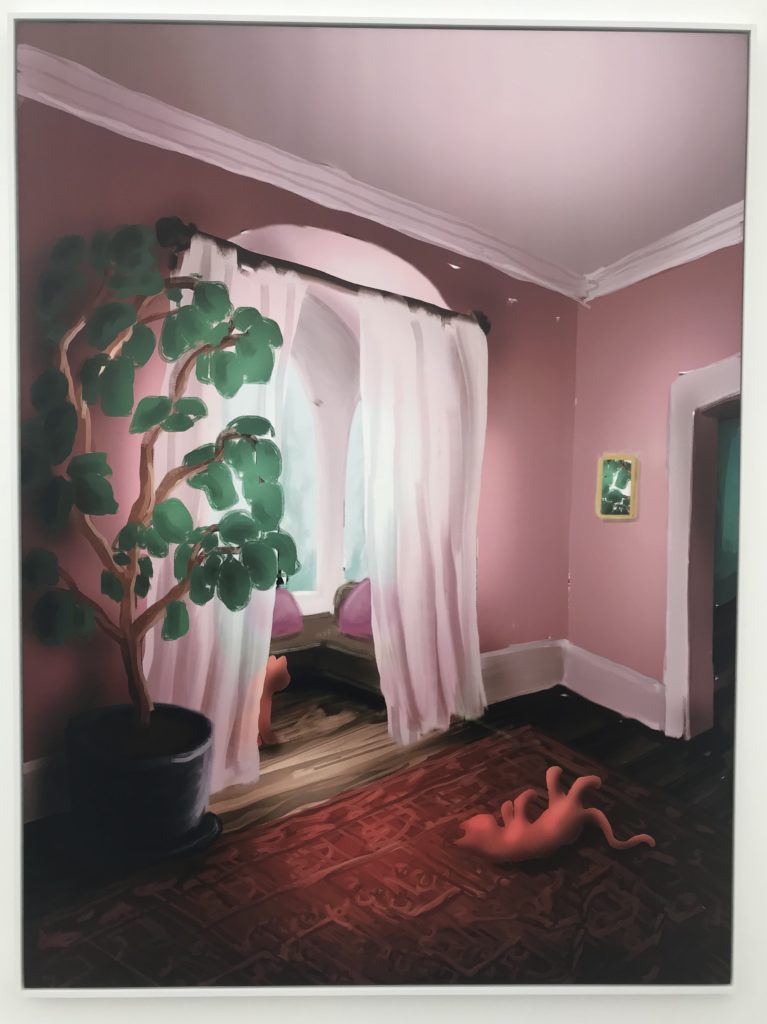
Alcove, 2018, at the Modern Institute’s booth.
It’s interesting to see another mature, famous artist follow in the enterprising footsteps of David Hockney, whose iPad paintings have already entered the canon, though as of yet it’s not precisely what Fischer’s use of the technique adds to or advances the elder artist’s lyrical embrace of the technology. Gleaming at Gagosian, however, they undeniably provide his many avid collectors attractive new objects of desire. They also make his big red candle portrait of the curator Francesco Bonami, next door at Sadie Coles’s gallery, start to look more original again: